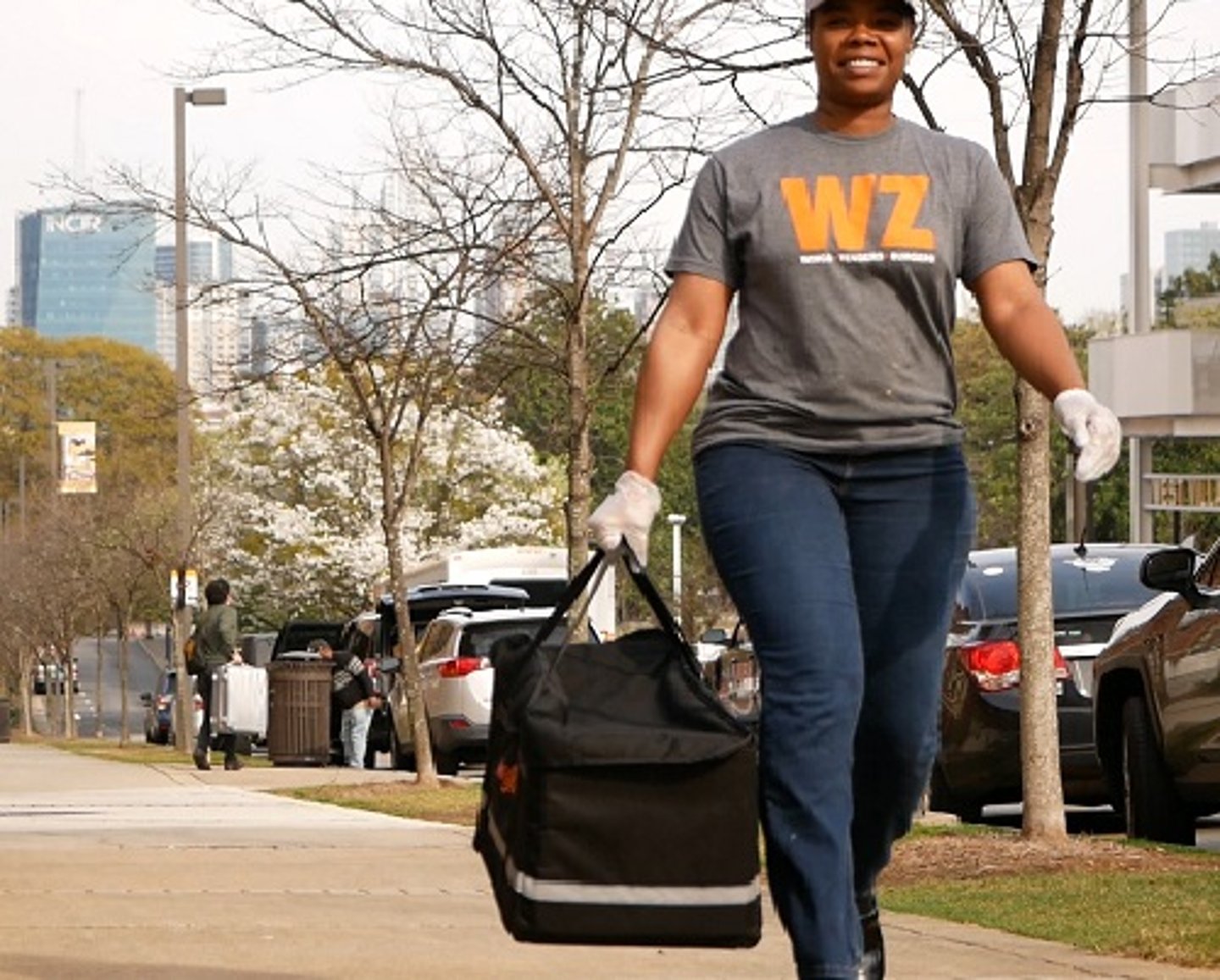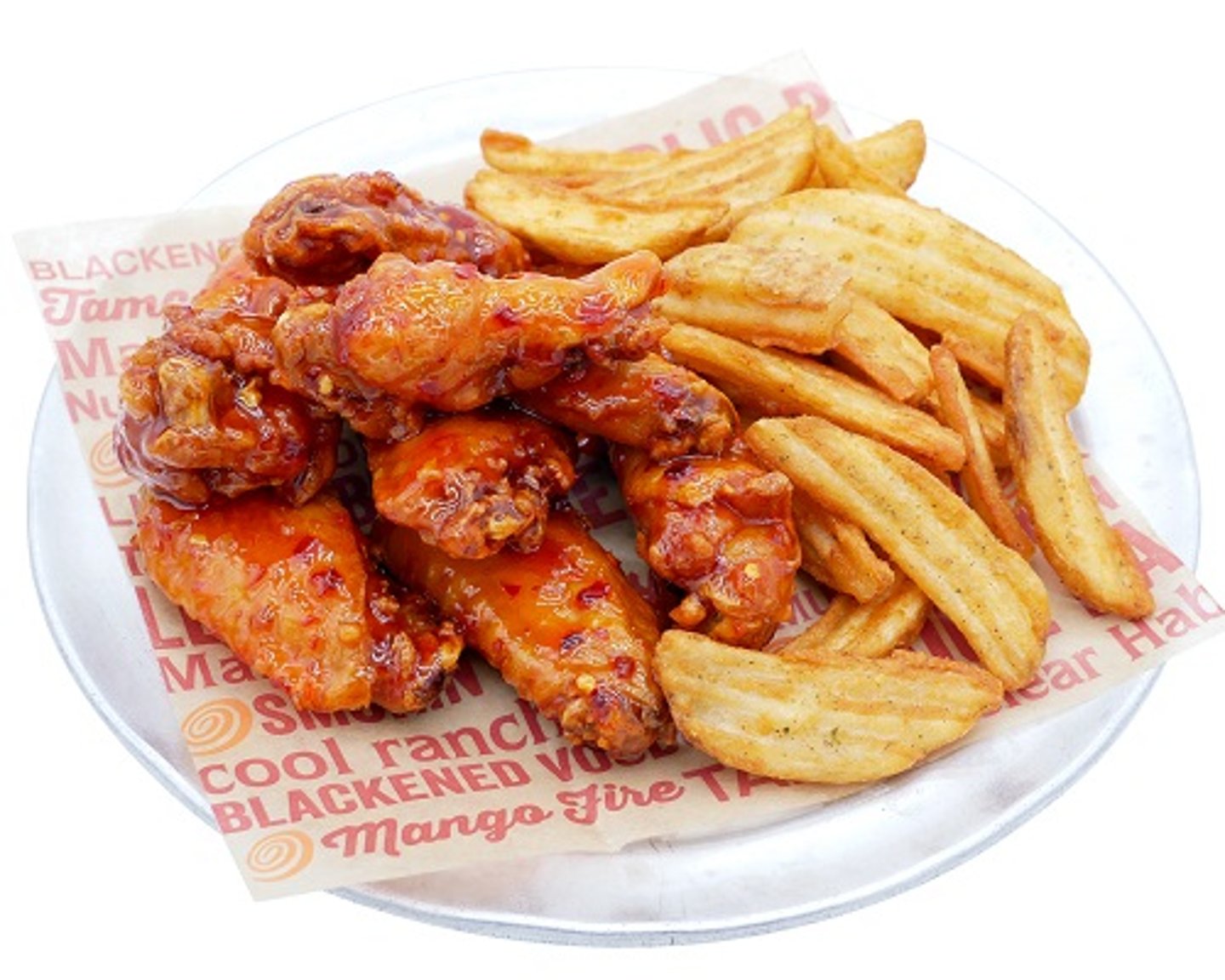Wing Zone’s Native Delivery Helps Power 45% YOY Sales Increase
With enviable sales increases of 45% year-over-year between April and May, Wing Zone has not only survived but thrived during the COVID-19 pandemic.
Its focus on off-prem orders has proven to be a viable business model, especially during these uncertain times.
Inspirational Pizza Delivery
When Wing Zone started 25 years ago, Domino’s Pizza was the inspiration for the to-go concept designed for small footprints.
“The model I was trying to create was a Buffalo Wild Wings version of Domino’s Pizza,” says Friedman.
Wing Zone has used Microworks, known for its Pizza POS, for more than 20 years. Back before Domino’s became a tech company, it used Microworks’ POS, explains Friedman. “They know the delivery business. They know driver routing, out of the door times and delivery times.”
All Wing Zone restaurants use the same system, facilitating reporting and tracking across the chain.
“The Wing Zone model goes into small footprints,” explains Matt Friedman, cofounder and CEO Wing Zone. “Our main focus is takeout and delivery and has been for over two decades. With COVID-19, dine-in restaurants have been increasingly affected. For Wing Zone our business has been growing.”
In March, same store sales increased 15%, 40% in April, and 50% in May.
“It has been this locomotive that is building,” says Friedman about the concept’s impressive same-store sales. “Between April and May, our sales are up 45% – two-thirds of our business is from delivery,” says Friedman. “The sheer number of delivery increases was pretty dramatic.”
For Wing Zone, 80% of delivery is done in-house by a Wing Zone employee and about 20% is by third-party delivery services.
“It was a little bit of a test. Within 18-24 months it has blossomed,” Friedman said about the relationships Wing Zone has with third-party delivery companies.
Just Eat Takeway/ Grubhub Alliance
Friedman sees the recent news, Just Eat Takeaway.com NV agreement to acquire U.S. third-party delivery platform Grubhub Inc. for $7.3 billion, to be good news – and much better than a Grubhub-UberEats merger. “There is already a big three,” he says about U.S. third party delivery companies. “Getting to a big two is concerning from restaurant and fees perspective.
“Third-party delivery fees will continue to be a big topic,” he says. Fees at 20% are doable for most restaurants and they can make a profit, but when the fees creep to 30%, the question is, is third-party delivery profitable and worth it, he says. “It is going to be interesting to see where this all settles out in the next 12 months,” Friedman says.
Own the Relationship/ Control the Experience
Third-party delivery companies are maligned for their fees, however their tech platforms help brands market to new customers and capture additional revenue. Delivery providers have their place in the marketplace, says Friedman, and may be the right decision for restaurant brands looking for additional exposure.
“We do view them as a competitor, but we are in business with them. They offer delivery across the country for the products we have. Wing Zone works with the big three (third-party delivery companies) as well as some local options. “
However, one of the biggest drawbacks, from Wing Zone’s perspective, is the customer data.
“With third-party delivery you lose all customer data,” says Friedman. “We don’t know if it is a new customer or if it is a Wing Zone customer who went to third-party delivery.”
“We believe in direct delivery and the power of data. When a customer orders direct, I know their favorite order, their favorite sauce.” Those customer insights can be leveraged in multiple ways and through a whole slew of marketing campaigns including direct mail, SMS text and email.
Wing Zone uses Plum Reward for SMS text, and Bronto – for loyalty points rewards tied to customer’s phone number.
And when customers order direct, the brand is able to control the experience – from order to delivery. Wing Zone prides itself on food coming from a Wing Zone driver wearing a Wing Zone uniform and hot bag. These details matter, says Friedman, as the brand is looking to build and maintain consumer confidence and loyalty.
Even though Wing Zone does use third-party delivery, “We do not market any third-party delivery in our stores,” stresses Friedman. “I think it is important to have aggressive marketing of our delivery program. ‘Be a part of our loyalty program’ – we market the benefits of ordering from us.”Inside the store, there has never been an array of tablets. All third-party delivery orders are integrated straight into the Microworks POS using Checkmate.
Considering Own Delivery?
As many restaurants are shifting to off-prem due to the COVID-19 pandemic, many restaurants are looking at adding in-house or native delivery. Restaurant Technology Network (RTN) has created a Native Delivery Workgroup where restaurants can troubleshoot and share best practices. The next workgroup is June 25 at 1 pm C.
“A lot of restaurant brands think it is easy to implement own delivery,” cautions Friedman. “I will tell you it is very challenging.”
Liability, insurance and packaging are three concerns he rattles off.
“Any restaurant can implement third-party delivery in a few days. When you manage your own delivery, you have got to have the right POS system to do it. You have got to understand the challenges of delivery drivers,” a position that has a high turnover.
Now Hiring Drivers
Before COVID-19, it was difficult finding delivery drivers because of the lure of driving for ride-share businesses and writing your own schedule, says Friedman. They might get applications for 2 drivers a month. With many rideshare drivers sidelined because of the pandemic and decreased consumer demand, Wing Zone has been able to hire more drivers. Now locations are fielding several applications per day.
To meet the demand for delivery, the company is adding as many as 200 jobs across its 80 locations in 25 states.
Future Outlook
In addition to continued demand for eating at home, Friedman sees a continued interest in supporting local businesses. “People are focused on eating and shopping locally.” He does expect increased competition from home meal replacements companies, more competition with grocery stores, and more restaurants doing takeout.
And he expects delivery, curbside and pickup to have staying power. “I believe for the next 18 months, those all will be strong performers and will continue to do well.”
As for Wing Zone, Friedman is optimistic about the future. “My outlook is continued strong sales,” he says. “Delivery is here to stay.”



